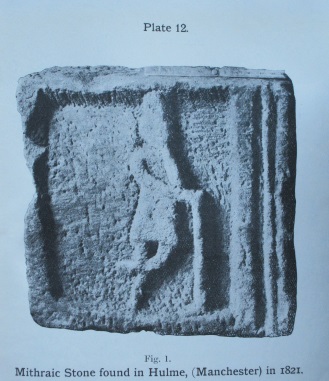
CIMRM Supplement - A stone Cautopates and two other figures. Manchester, Britain.
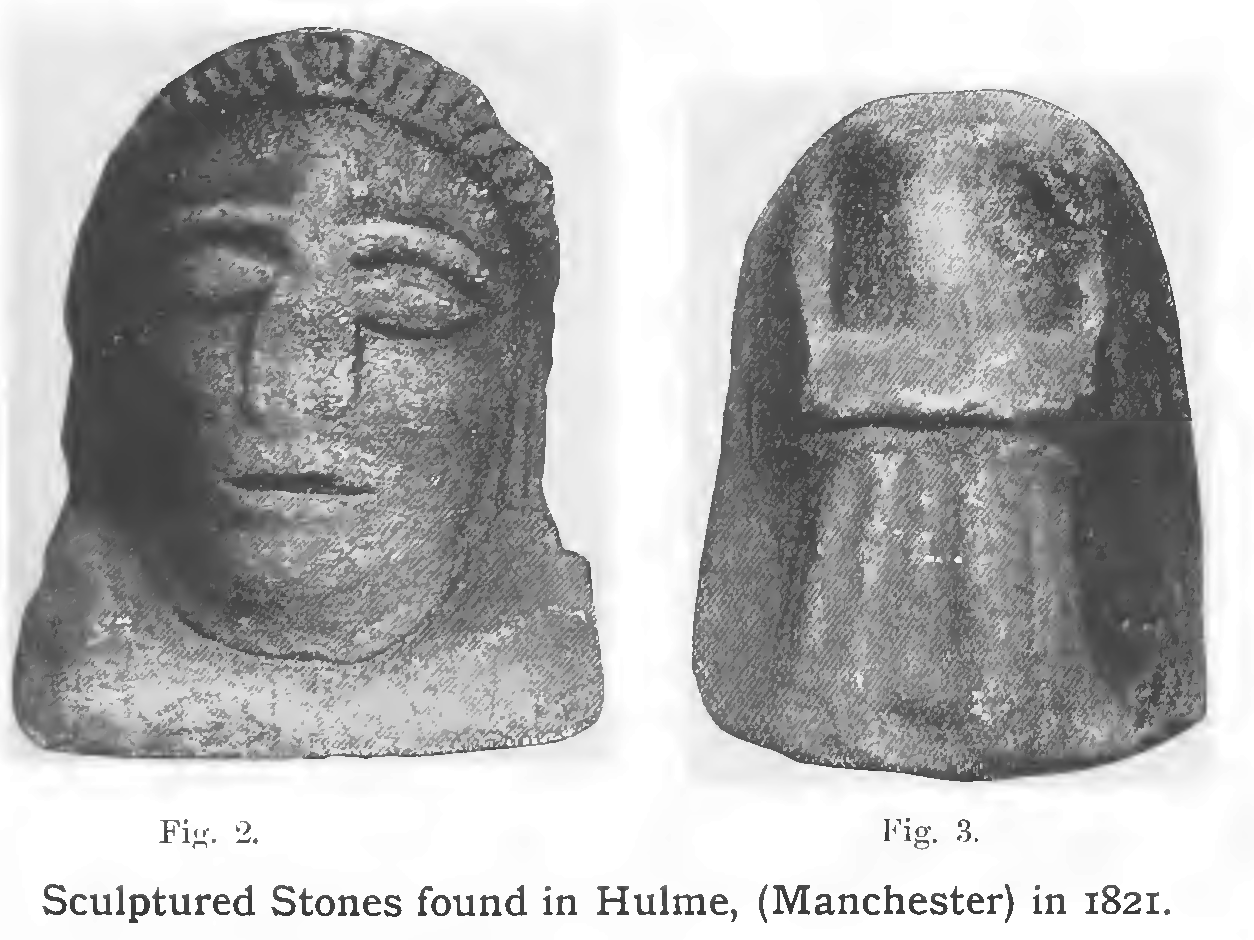
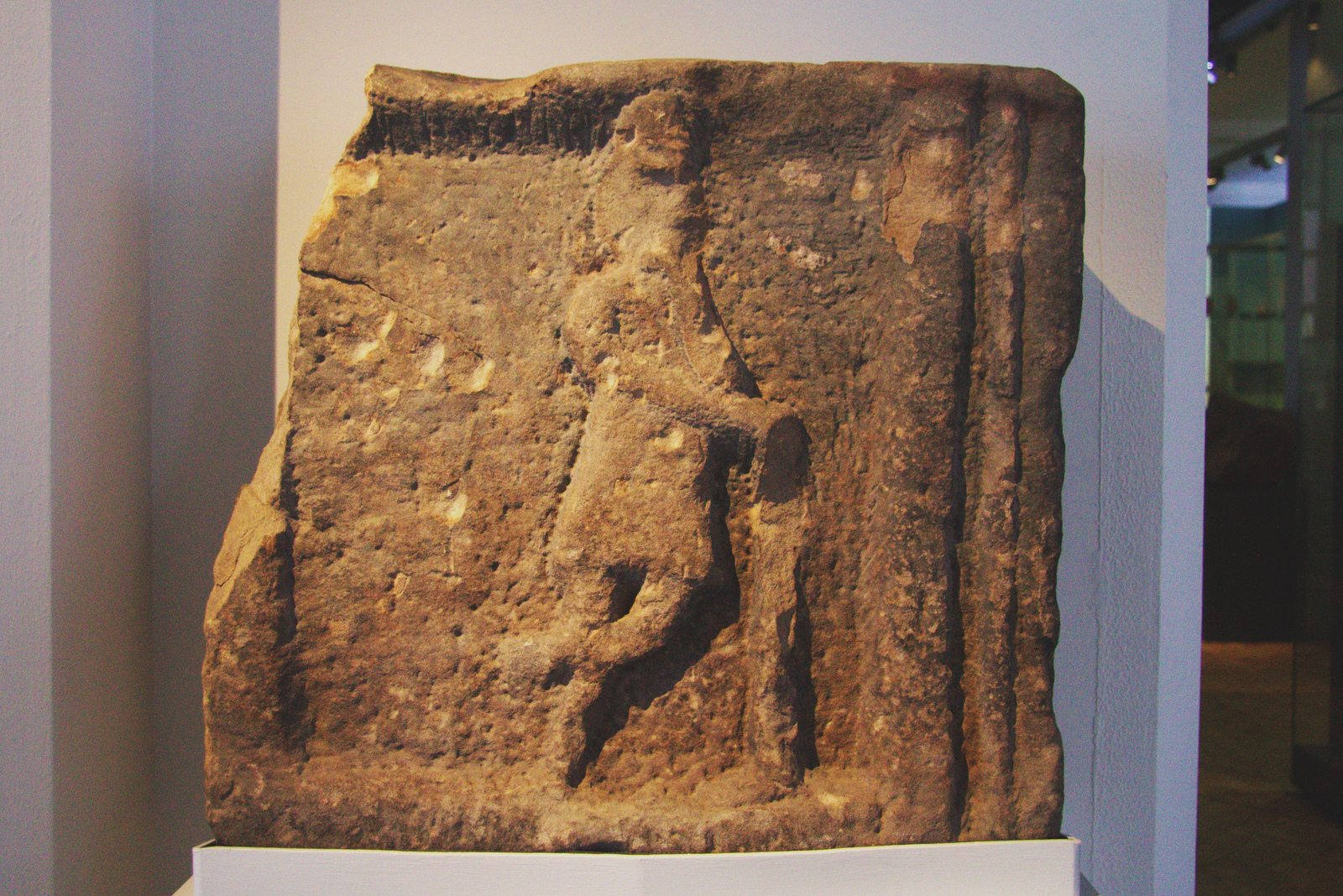
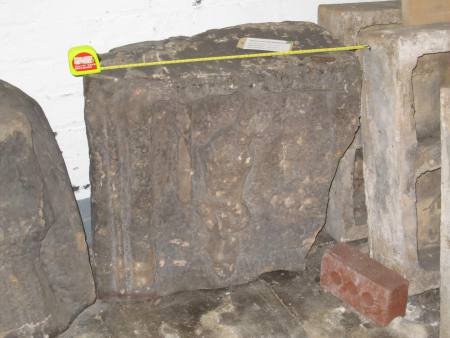
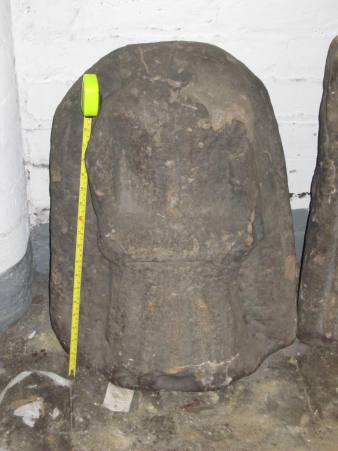
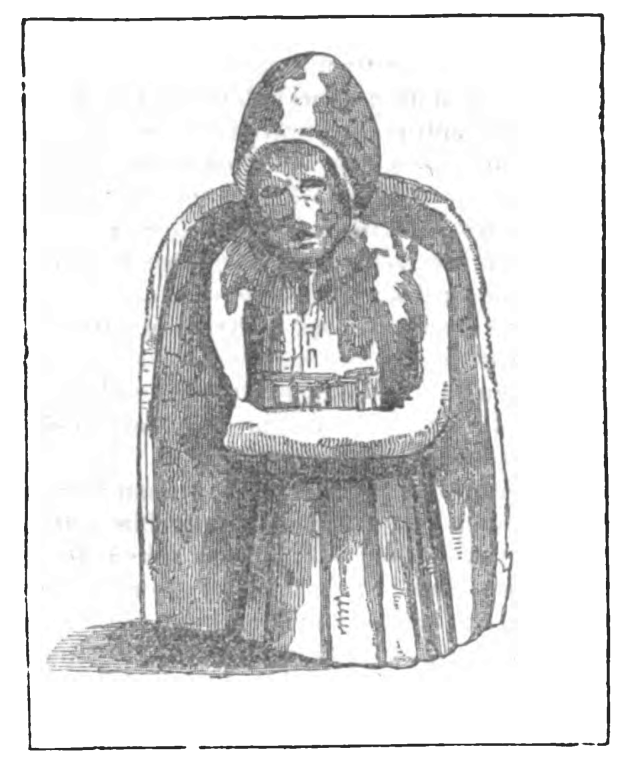
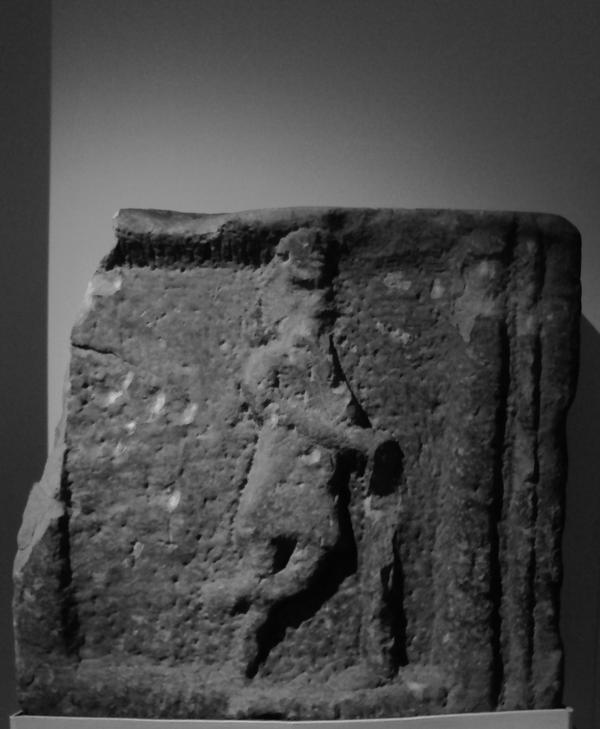
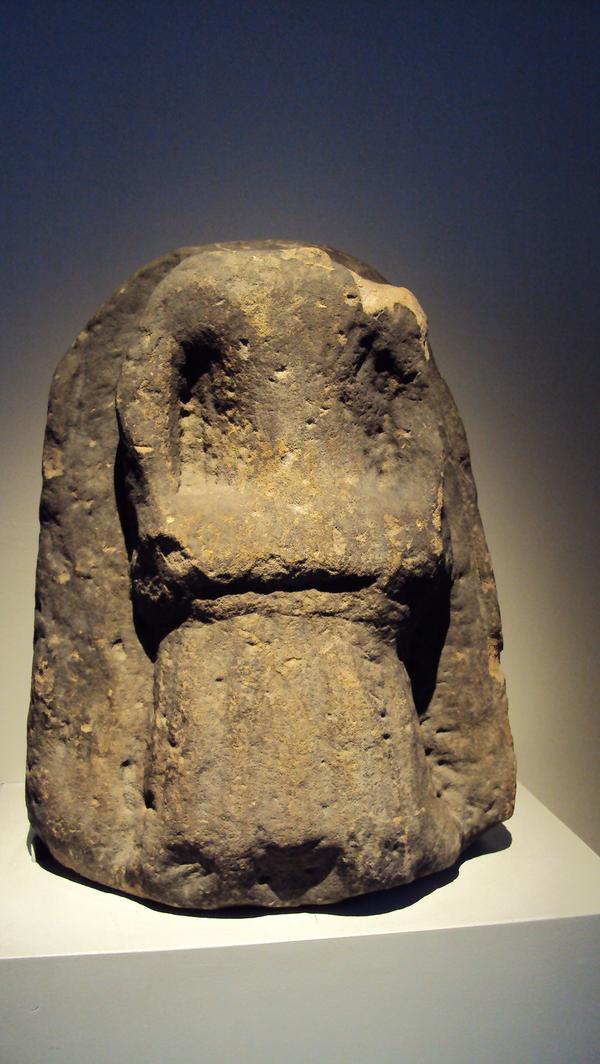
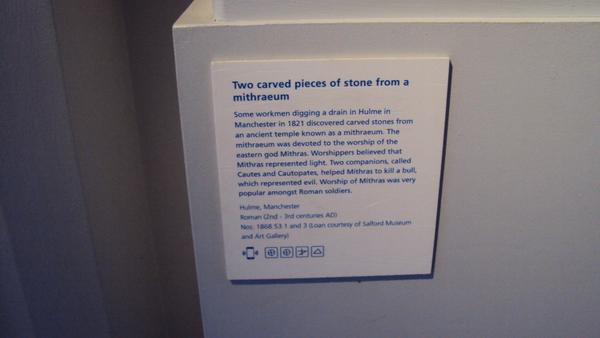
The Gentlemen's Magazine, 1821, vol. 129, part 1, p.257; Samuel Hibbert, The ancient parish church of Manchester, 1848. p.19; F. Bruton, The Roman Fort at Manchester. Manchester 1909. Online here; F. Bruton, A Short History of Manchester and Salford. Manchester 1927.
In 1821 the Gentlemen's Magazine, vol. 129, p.257, reported that three large blocks of stone, all about two and a half feet high, were discovered, just within the gravel, about six feet below the ground. The first was a representation of Cautopates, within a raised square border or moulding. The Cautopates has the usual form with the torch downwards and crossed legs. The lower moulding on one side suggests that it was part of a series. The second was a large head. The third was an image in a flowing dress, with arms crossed at the front, and the head broken off but found nearby. The head portion of the last monument was lost sometime after 1848 but is depicted by Hibbert. They were found on the exact line of the Roman road from Manchester to Chester, a few hundred yards to the south of the Roman fort of Mamucium, the modern Castlefields district of Manchester. Various other Roman finds were made at various times very nearby, including an altar of Legio VI Victrix. The stone used is the local dark brown grit stone, so not brought from a distance.
The items are kept in the basement of the Salford Museum and Art Gallery, but in 2012 were on loan to the Manchester Museum.
Vermaseren appears to have omitted from the CIMRM the details of the Manchester Mithraeum and its remains, but he gives the Bruton references in the bibliography.
Some of the literature supposes that there was a Mithraeum at the site, and that it was destroyed by the works. However the only account of the find seems to be that of Whatton in the Gentleman's Magazine, and this does not make either statement. In the absence of further investigation, possibly the stones were simply dumped here at some point and abandoned, perhaps after the triumph of Christianity?
Other bibliography:
- Samuel Hibbert, The ancient parish church of Manchester, 1848. p.19 discusses the head, and the mysterious figure. The head is one foot ten inches tall and one foot six inches broad. The other is described thus: "... being that of a female with a loose cap on her head, and arrayed in rather an elegant robe. The forearms are placed over the front part of the waist." It is two foot four inches tall and one foot four inches broad. On p.25 is an imaginative description of the Cautopates figure as a crusader. Hibbert supposes that all three monuments are actually from a church (!)
- Transactions of the Lancashire and Cheshire Antiquarian Society, vol. 27 (1910), p.33 mentions "Reproductions of Photographs of a Cross-legged Figure, a head, and a figure bearing a tray of offerings, all relating to the worship of Mithras in Manchester; they were found in Hulme in 1821. See the printed label lent by Salford Corporation". Unfortunately this volume is not accessible from the UK.
- Another snippet from vols.41-50 (1936), p.176, of the same journal states: "I refer to the discovery of the three Mithraic objects in Hulme, in 1821. They were first described ... On the dissolution of this museum, they were handed over to Peel Park Museum, Salford, where they are now preserved" and another snippet from the same: "I refer to the discovery of the three Mithraic objects in Hulme, in 1821. They were first described by Whatton in the Gentleman's Magazine for 1821 (part 1, p. 257) and have been further dealt with by later writers. Charles Roeder made a short ...".
From Shelagh Grealey, Roman Manchester, p.16:
With regard to the only other site in Manchester where the presence of a specific view building was certainly indicated, no structural information was ever obtained. The site in question lay along the line of the Roman road leading from Manchester to Chester, a few hundred yards south-west of the Castle Field fort but on the far side of the Mcdlock in what was then the township of Hulme. In 1821 while workmen were sinking a drain they came upon three large blocks of stone within the gravel about 6 ft. below ground level.[21] The first of these represented a figure about 2 ft. 6 ins. high, dressed in a flowing garment and with its arms crossed in front of its body. The head of this sculpture was broken off and later lost. The second stone took the form of a large, crudely carved head whose features and stiffly brushed-back hair showed marked Celtic influence. The most interesting sculpture, however, was undoubtedly the third which was carved on a large stone plaque (the two former having been freestanding) and showed the figure of a man dressed in a tunic with his left leg crossed before the right and a Persian cap on his head. In his right hand was held a torch pressed downwards into the ground while the left hand supported his chin. The broken edge of the panel showed clearly that it had formed the extreme right wing of a series.[22] The figure can be identified immediately as that of Cautopates, an important accessory figure connected with the worship of the Persian god Mithras whose cult attained great popularity among the legions.[23]
Undoubtedly the place of their discovery was the site of a mithraeum (temple of Mithras) and it is regrettable that no competent person was in the vicinity at the time to record whatever structures were associated with the stones. The loss is particularly unfortunate as the site would have been of special interest in that it is the only place south of the Medlock where a building belonging to the Roman occupation of the city can definitely be postulated.
| Tweet |
